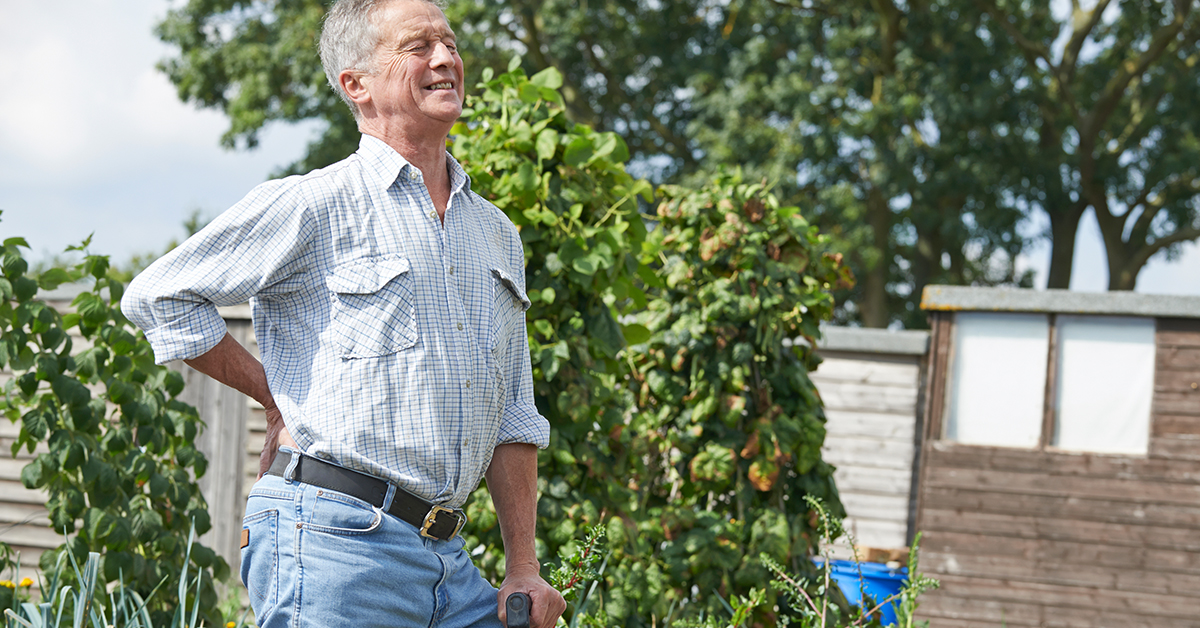
Gardeners, Protect Your Spine!
Digging, weeding, planting, carrying, spading, watering - there's a lot of potential for back pain in the average flower or vegetable garden. As the Spring and Summer seasons bring in prime gardening weather, how can we protect our spines?
Gardening and Your Back: Preparation
After a long, relatively inactive winter, it's time to prep your garden beds for the flowers or the vegetables that liven up your meals and brighten up your home. Just as many people use a greenhouse or cold frame to get the jump on spring, the smart gardener can take some steps to make sure that their body is ready for the work ahead. In the months and weeks before you start digging in the dirt, step you exercise routine, add some yoga and gentle stretching and generally tone up. A few sessions a week will improve your general health and disposition, and will likely help you avoid the painful consequences of jumping into the work of gardening before you're in shape. Before getting down to work, consider taking a brisk walk, and doing some lunges and warmup stretches, so you're more ready to exert yourself.
Another important prep step: remember to hydrate! Your muscles function better when you combat the effects of sun and exertion by drinking extra water before, during and after working outdoors. Also, when your water intake is sufficient, you might be a little less likely to experience muscle cramps or spasms.
Remember, too, to protect yourself from the sun. A wide brimmed hat and long sleeves might not prevent back spasms, but you're less likely to incur a painful and potentially dangerous case of sunburn. Sun safety also includes protecting your eyes by wearing sunglasses with UV-blocking lenses.
Gardening and Your Back: Tools
The tools you use can make a significant difference when it comes to protecting your back while gardening. Begin with hand tools: using short-handled tools for digging, weeding and planting can lead you to lean over the work, inviting lower back strain. Using longer handles helps you maintain a more erect posture.
Be careful to rely on your legs and spare your back when lifting bags of soil, mulch or fertilizer. Don't kneel to garden without a pad - you're likely to feel stiff and sore afterward, from the knees through the hips to the lumbar region. It's even better to use a stool, or even a rolling seat, to keep pressure off your knees and stress off your spine. Will you be re-potting plants? Set up a table so you can stand up to do this, instead of leaning over the job. A wheeled tool caddy can help you avoid getting up and down all the time to fetch the implement you put down at the far end of the row.
Gardening and Your Back: Mix up the chores, spread out the work
You might be thinking your garden patch needs a full day of spading and fertilizing, but restrain yourself! For the sake of your back, it's better to vary your yardwork chores throughout the day. Try breaking up the big tasks with some smaller ones, for the mental AND the physical variety. Remember to take breaks at frequent intervals, to avoid fatigue and overexertion. A little planning can keep you from overdoing your garden tending tasks, and your back will thank you for it.
Gardening and Your Back: Posture
Lifting - remember to use your knees, legs and hips when hefting bags of soil or mulch, or shifting a shovel of dirt. If there's a lot of material, whether pruned branches, grass clippings or landscaping blocks, move a little bit at a time.
Weeding and harvesting - use that wheeled bench when moving about your garden plot. Leaning over or bending at the waist are much more likely to strain your back muscles than a mindful, back-sparing approach to the job.
Raking - switch hands often when using your leaf rake, hoe or garden cultivator, so you don't overuse your dominant hand. A more balanced approached to those sweeping and pulling tasks will help keep you pain free for the next day's chores.
Mowing - if you push a mower or wheeled spreader for seed or fertilizer, be careful not to lean forward too far, as this can inflict strain on your spine. Keep your erect posture in mind as you relax your back and push with your arms and legs.
To sum up: With a little advance planning, a careful selection and use of tools, and a little mindfulness while you work, you can enjoy the best parts of gardening. Here's to your crop of flowers, vegetables, lush grass, herbs or whatever it is that gives you satisfaction. May you enjoy the fruits of your labor pain-free!




